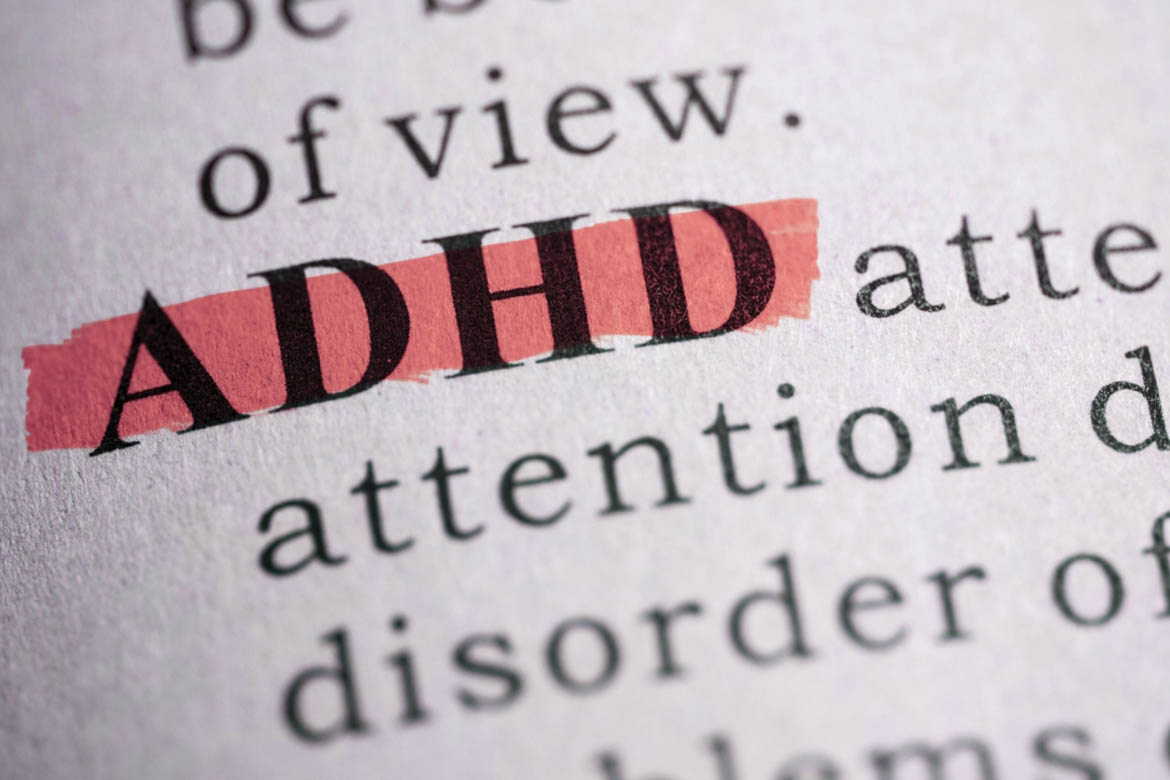
Am I Depressed? 6 Signs You Should Know About
- You’ve been feeling low or irritable for most of the day, every day for two weeks or more. You might have found yourself worrying about past or future events for long periods of time, or simply feeling sad, cross or tearful. Sometimes it’s hard to recognize a gradual change – have others noticed that you don’t seem your usual self?
- You’ve lost interest in activities that you used to enjoy. Perhaps you have been seeing less of your friends or family recently, have stopped going to the gym, or cooking balanced meals. This is really about recognizing changes in what’s normal for you – no one is saying you have to exercise five times a week or eat your greens, but changes in your routine can offer concrete indications that your mood is changing.
- You are struggling to concentrate. You might notice that you struggle to focus when reading or watching television, for example, or to follow the thread of a spoken conversation. This could be affecting your performance at work, or limiting your ability to perform routine tasks such as food shopping. Again, we are looking for a change in what’s normal for you, so if concentration has always been something you find tricky there is little cause for concern.
- Your energy levels are depleted. Feeling exhausted is one of the most debilitating effects of depression. Summoning the energy to do anything – even getting out of bed – can be a huge effort, and you might find yourself feeling frustrated at not being able to do things that used to be seemingly effortless.
- Your sleeping and/or eating patterns have changed. Often, it is said that a reduced appetite is a sign of depression. In fact, eating more than usual can be just as indicative of low mood as eating less. The same goes for sleeping: both sleeping more and sleeping less are warning signs that you might have depression. Early morning waking – that is, waking several hours before you would normally expect to, and struggling to get back to sleep – is another common sign
- You’ve been preoccupied with feelings of guilt or worthlessness. This might be a case of feeling like you’re in the wrong or that you’ve let people down, or that you are a burden on those who are close to you. Often, these ideas are disproportionate to the event that has triggered them. A good way to test whether these ideas might be out of proportion is to ask a trusted friend or family member whether they would feel the same way in your shoes.

In three words I can sum up everything I’ve learned about life: it goes on.
– Robert Frost
Get a Consultation Right Now! Call: 98580 98560
WE ARE A GROUP OF LICENSED AND EXPERIENCED PSYCHOLOGISTS AND COUNSELORS

What IS ADHD
Attention-deficit/hyperactivity disorder (previously known as attention deficit disorder or ADD) is a neurobehavioral disorder characterized by core symptoms of inattentiveness, distractibility, hyperactivity, and impulsivity. ADHD is thought to be the most common childhood mental health disorder, with estimates of its prevalence in children ranging from 5 to 11 percent. ADHD in adulthood is thought to be less common, with approximately 2 to 5 percent of adults diagnosed.
ADHD symptoms can interfere with work, school, household tasks, and relationships, and managing the disorder can be a challenge for both children and adults. Fortunately, there are treatments that have been shown to be effective, and anyone affected by ADHD can learn coping skills to work around struggles and harness their talents—as many successful individuals with ADHD have already done.
Some children and adults with ADHD find it difficult to concentrate on tasks at school or work and may daydream frequently. Children with ADHD may become disruptive, defiant, or have trouble getting along with parents, peers, or teachers. Children who struggle with hyperactivity and impulsivity, in particular, often have behavioral challenges that can be difficult for adults to manage.
Adults, on the other hand, maybe more likely to report feeling restless or fidgety; if they struggle with impulsivity, they may make rash decisions that adversely affect their life. For both children and adults, executive functioning (planning, emotional regulation, and decision-making) is often affected as well. Many children and adults display either hyperactive or inattentive symptoms of ADHD, but it’s also possible for both sets of symptoms to exist together, in what is typically called combined type ADHD.
Most psychiatrists and psychologists agree that ADHD is real. It runs in families (suggesting genetic roots) and neurological evidence has found it to be associated with alterations in brain growth and development. ADHD is also clearly linked to academic, work, and relationship problems—and responds to treatment—suggesting that it has clinical validity. But whether the disorder is overdiagnosed and overtreated—or whether it reflects a set of evolved traits that have become less adaptive in today’s world—is widely debated.
Like many other mental health disorders, the causes of ADHD remain under investigation. Genes are theorized to play a key role, as are environmental influences such as exposure to toxins in the womb and early traumatic experiences. Since ADHD is a behavioral disorder, expectations of appropriate behavior, particularly in children, likely influence diagnoses in some cases.
Experts have debated whether treatment for ADHD should be primarily behavioral (therapy, attention training, increased play, greater structure) or pharmacological. Several large studies have concluded that a combination of both may be most effective.
Significant evidence suggests that ADHD has both genetic and environmental underpinnings. Twin studies, for instance, have found that identical twins are significantly more likely than fraternal twins to both be diagnosed with ADHD or display ADHD-like behaviors. There is no single gene that is considered “responsible” for ADHD; rather, like many psychiatric conditions, it is thought to be linked to many genetic variants, only some of which have been uncovered.
Some experts argue that what we call ADHD is actually a “disease of civilization”—that is, a disorder that arises because of a mismatch between humans’ evolutionary roots and our modern environment. High energy levels, for instance, may have been adaptive for a hunter-gatherer but are problematic in a modern classroom. Some prominent child development experts have noted that the recent rise in ADHD diagnoses has coincided with an increased focus (particularly in American schools) on rigorous standardized testing and reduced playtime—suggesting that at least some children diagnosed with ADHD have been placed in environments that worsen the evolutionary mismatch.
Though ADHD can and often does cause academic challenges, it is not considered a specific learning disability (such as dyslexia or dysgraphia). However, many children with ADHD—anywhere from 30 to 50 percent, according to some estimates—have a comorbid learning disability. The conditions can also display similar external symptoms, particularly in children.
While fidgetiness is certainly an aspect of ADHD, the condition is more complex than physical restlessness. If, in addition to constant fidgetiness, you experience strong feelings of distractibility that persist in multiple settings, often behave impulsively, talk excessively, struggle to follow through on tasks or manage your time, and/or make careless mistakes on important projects, you may show symptoms of ADHD. Requesting an evaluation from a healthcare provider is the first step to receiving a diagnosis and initiating treatment. For more about symptoms and diagnosis, see ADHD Symptoms and Diagnosis.
(Content Courtesy: Psychologytoday)
We offer high-quality counseling and therapy for ADHD children/adults. That will help you to grow and improve
Get a Consultation Right Now! Call: 98580 98560
WE ARE A GROUP OF LICENSED AND EXPERIENCED PSYCHOLOGISTS AND COUNSELORS

Autism
Autism is a developmental disorder that affects information processing in multiple ways. People with autism have difficulties with social and communication skills. They have restricted interests and engage in repetitive behaviors. They also tend to experience sensitivity or discomfort from sensory stimulation such as certain sights or sounds.
Because autism’s symptoms vary greatly, the condition is said to exist on a spectrum, referred to as Autism Spectrum Disorder. Asperger’s syndrome refers to “high functioning” autism but is no longer a formal diagnostic term.
Autism usually manifests by age two. The condition is diagnosed four times more frequently in males than in females, according to the CDC, although women are often overlooked and misdiagnosed. The frequency of diagnosis has surged over the past 20 years; it is not clear whether the incidence is truly increasing, whether experts are more alert to it, or whether the diagnosis has shifted to include lesser degrees of impairment.
There is no cure for autism, nor is one universally sought: Many people argue that autism should not be framed as a medical condition in need of amelioration. For those on the lower-functioning end of the autism spectrum, targeted practices and therapies can help alleviate symptoms. Symptoms may also ease over the years.
The condition manifests before age three and can be particularly confusing because some affected children appear to develop normally until the onset of the disorder. While the severity of symptoms varies greatly, there are invariably impairments to social and communication skills. (Some children with autism do not talk at all and remain mute throughout life), Children with autism also show restricted interests and repetitive behaviors.
Parents may notice that their infant avoids eye contact or doesn’t respond, and it may be difficult for them to form emotional bonds and parental attachment. Children with autism have unusual responses to sensory experiences and may be highly sensitive to certain sounds, textures, tastes, or smells. They may have deficits in motor coordination and poor muscle tone.
Autistic children exhibit many kinds of repetitive behaviors early in life, such as hand flapping, body rocking, and making sounds. They may arrange or stack objects over and over again. Some children inflict injury to themselves by repeated actions such as hand biting and headbanging. They show an early preference for unvarying routines of everyday life.
No one fully understands what causes autism. The number of children diagnosed with the disorder has increased significantly since the turn of the millennium, but experts are not sure whether that reflects an improvement in diagnostic awareness or a true increase in prevalence.
Research shows that genetics is a factor because people who have a sibling with autism are more likely to have autism themselves. Autism is also more likely in individuals who have an older parent. Very low birth weight is also a risk factor, according to the National Institute of Mental Health, and ASD occurs more frequently in people with some genetic conditions, such as Fragile X syndrome or tuberous sclerosis.
There are many approaches to managing or treating autism that have demonstrable results. Early intervention with highly structured behavioral, cognitive, and communication therapies can sometimes dramatically help children with autism learn skills, but some children with autism are unable to live independently as adults. School-based educational programs designed for children with autism can be effective in improving intellectual functioning.
Programs that make use of applied behavior analysis (ABA) have become widely accepted as the standard of treatment. In most effective programs, parents are encouraged to be highly involved in their children’s care.
While no medication can correct the impairments common to autism, psychoactive drugs including antidepressants, antipsychotics, and anticonvulsants are often prescribed to help control specific symptoms. Anticonvulsant medication may reduce the number of seizures but not eliminate them entirely.
There are also many alternative treatments promoted to parents of children with autism, such as facilitated communication and auditory integration training, to name a few; many have been shown to be ineffective. It is important for parents of children with autism to look into prospective treatments as thoroughly as possible.
.
Taking into account the biological and neurological differences between male and female brains and minds, British psychologist Simon Baron-Cohen proposed the theory that autism represents an extreme version of a typically “male” brain. Men are overall more efficient at systemizing while women are more capable of empathizing.
Although there are exceptions, both men and women on the autism spectrum display a strong inclination towards systemizing. They are excellent at visual-spatial manipulation and rule-bound thinking but not as capable of empathy and mind-reading. For this reason, Baron-Cohen has labeled autism “mind-blindness.”
Baron-Cohen’s work may help explain why approximately four times as many males as females are diagnosed on the autism spectrum. Those statistics may not be reliable, however, as females with autism are often misdiagnosed as having other conditions.
Everyone on the autism spectrum has a unique experience, but clinicians generally categorize people with autism into three levels depending on the severity of their social deficits and restrictive behaviors. Individuals on the mild end of the spectrum have slight difficulties navigating social interactions and completing certain tasks, while those in the middle of the spectrum have substantial interpersonal challenges and struggle deeply with change.
People with a more severe form of autism may have intellectual disability, be unable to speak, or experience extreme discomfort from certain lights, sounds, smells, and textures. They are also at risk of wandering away from their caregivers. Severe autism can lead to aggressive or violent repetitive behaviors such as banging one’s head against a wall or striking others. An especially dangerous situation may result in hospitalization; research shows that 11 percent of children with autism have been hospitalized before adulthood. A variety of medical conditions often co-occur with autism, such as epilepsy, anxiety, gastrointestinal issues, or difficulty sleeping.
(Content Courtesy: Psychologytoday)
We offer high-quality counseling and therapy for Autustic children/adults. That will help you to grow and improve
Get a Consultation Right Now! Call: 98580 98560
WE ARE A GROUP OF LICENSED AND EXPERIENCED PSYCHOLOGISTS AND COUNSELORS

Chronic Pain
When someone touches a hot stove and burns their fingers, a little pain is normal. In fact, it’s a healthy reaction to a threat in the environment, warning that person to change their behavior immediately. But sometimes the pain lingers long after the danger has passed, becoming chronic.
Chronic pain in the form of headaches, joint problems, or full-blown fibromyalgia can radically impact one’s life. For many people, there is no end in sight to the pain; it may even derail employment and relationships. Some 100 million Americans suffer from some form of chronic pain. It can be influenced by many factors, including emotion and memory.
When an injury occurs, pain sensors light up, sending messages via an electrical signal to the brain. Normal pain—as in a minor headache—can be relieved by a few aspirins or the passage of time. But chronic pain is something different; the brain continues to receive pain signals long after the original injury or onset of pain.
What are the symptoms of chronic pain?
How long does chronic pain last?
Who is most at risk for developing chronic pain?
The pain was traditionally treated primarily as a physical problem. Patients were given medication, physical therapy, or, in extreme cases, surgery. While these methods helped some people, others experienced moderate to severe negative consequences, including surgical complications and addiction to pain medication and opioids.
Today, experts understand that pain can be addressed on the psychological and social levels as well. Though every individual’s pain is different and may respond to different interventions, there are certain strategies that can help manage the symptoms of chronic pain.
Is pain all in a person’s head?
What are the major treatments for chronic pain?
How does chronic pain affect mental health?
(Content Courtesy: Psychologytoday)
We offer high-quality counseling and therapy for ADHD children/adults. That will help you to grow and improve


